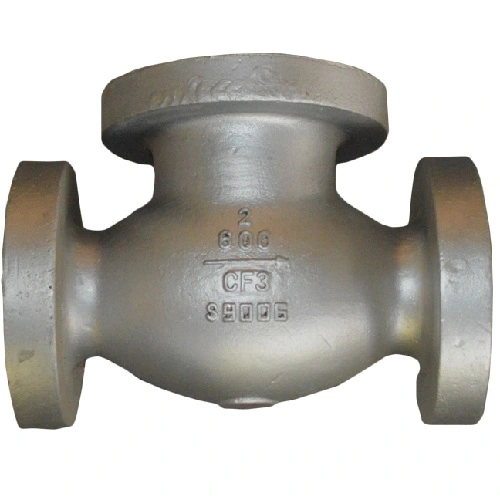Casting is the process of smelting metal into liquid that meets certain requirements, then pouring it into the mold. After cooling, solidifying and clearing, the casting having a predetermined shape, size and performance is obtained. It is the basic process of the modern machinery manufacturing industry. The casting is low in cost. For parts with complicated shape, especially with complex internal cavity, it is financially prefered. At the same time, it has sound adaptability and good comprehensive mechanical properties.But during casting production, a lot of materials and equipments are requiresuch as metal,wood, fuel, mould, metallurgical furnace, sand mixer, molding machine, core machine, falling sand machine, shot blasting machine, cast iron plate, and etc. It will also produce a lot of harmful dust, gas, and noise that pollutes the environment.
Casting is one of the earlier metal thermal processing technology mastered by humans. It has a history of about 6,000 years. In 3200 BC, copper castings in frog shape appeared in Mesopotamia. Between 13 BC and and 10th century BC, China has entered the heyday of bronze castings, and its craftsmanship has reached a fairly high level, such as the SIMUWU ding in the Shang dynasty, which weighs 875 kilograms, as well as the Zeng Houyi plate in the Warring States and the lenses in the Western Han Dynasty. They are the representative products of ancient castings. The early casting was greatly influenced by pottery, and most of the castings were tools and utensils for agriculture, religion, and living, and have strong artistry. In 513 BC, China had cast the world's first iron castings in the record-- Jin Guozhu Ding (about 270 kg weight). Around the 8th century AD, Europe began to cast. After the industrial revolution happened in the 18th century, casting had entered a new era. In the 20th century, casting began to develop in high speed. A lot of materias for casting had been developed, such as spheroidal graphite cast iron, malleable cast iron, ultra-low carbon stainless steel and aluminum-copper, aluminum-silicon, aluminum-magnesium alloy, titanium-based, nickel-based alloy and others. After the 1950s, there were some new technologies such as wet sand high pressure molding, chemical hardening sand molding and core making, negative pressure molding, and other special casting and shot blasting.
There are a lot of casting methods. By modeling, it can be classified into catagories including ordinary sand casting and special casting. The ordinary sand casting includes wet sand, dry sand and chemical hardening sand types. For special casting, there are mainly two types by modeling materials. One is taking the natural mineral sandstone as the main modeling material, such as investment casting, clay casting, casting workshop shell casting, negative pressure casting, solid casting, ceramic casting, and etc. The other is taking metal as the main casting materia,such as metal casting, pressure casting, continuous casting, low pressure casting, centrifugal casting, ans etc.
The casting process usually has three steps. The first is preparing mould. Mould is a container that makes the liquid metal into a solid casting. There are several types of mould, including sand mould, metal mould, ceramic mould, mudl mould, graphite mould. The moulds have different service life. Some moulds are just used for one time, but some are semi-permanent or permanent. The mould is the main factor that decides the quality of castings. The second step is melting and casting. Materials have cast iron, cast steel and cast non-ferrous alloys. The last step is the treatment and inspection of casting. Treatment includes removing foreign objects on casting surface , cutting pouring risers, planishing burrs and other projections, as well as heat treatment, shaping, anti-rust treatment and roughing.


Next: What is Steel Forging
